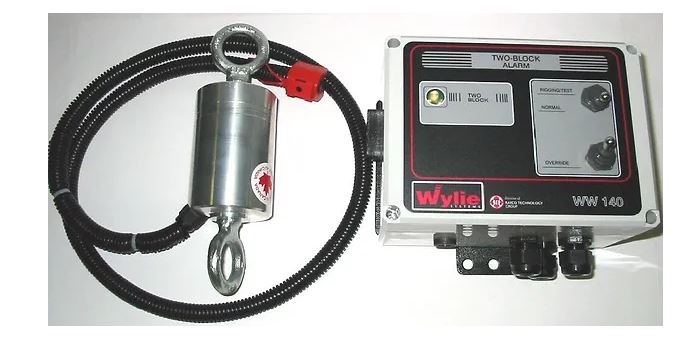Explore winter-specific precautions such as windspeed indicators for crane operationsand adapting protocols for cold conditions to ensure safety and reliability in chilly environments.

Winter conditions pose unique challenges for crane inspections, demanding specialized precautions to ensure safety and reliability. Cold temperatures affect crane components and operations, necessitating tailored protocols for efficient inspections. Equipment such as load moment indicators, crane windspeed indicators, and safety systems play a fundamental role in ensuring smooth and seamless operations.
Understanding Winter Challenges in Crane Inspections
During winter, freezing temperatures significantly impact crane components, potentially compromising their functionality. The contraction of metal parts due to cold temperatures can affect the crane's structural integrity and operational efficiency. Moreover, ice formation on crucial components poses risks of reduced functionality or even safety hazards, emphasizing the critical need for specialized inspection and maintenance routines during cold weather.
Adapting Inspection Protocols for Cold Weather
Adjusting inspection protocols for winter conditions is pivotal in upholding crane reliability. Rigorous pre-inspection assessments are paramount, focusing keenly on areas vulnerable to the cold, such as hydraulics, electronics, and lubricants.
Inspectors must utilize specialized tools and equipment tailored for accurate evaluations in low temperatures, ensuring thorough assessments despite weather constraints. Prioritizing personnel and equipment protection alongside strict adherence to safety protocols becomes crucial.
Implementing preventive measures to deter ice formation on essential components and ensuring adequate insulation to support continuous operations in freezing weather conditions becomes an imperative focus. Regular and meticulous maintenance, including the thorough lubrication of moving parts, serves as an essential preemptive measure to avert issues during the challenging winter season.
Safety Precautions and Best Practices
Implementing stringent safety precautions and adhering to best practices during winter crane inspections is paramount to ensure personnel safety and equipment reliability. Firstly, conducting thorough risk assessments tailored explicitly for cold weather scenarios is crucial. This includes assessing potential risks associated with frozen components, slippery surfaces, and reduced visibility due to snow or fog.
Rigorous safety measures should involve employing personal protective equipment (PPE) designed for cold conditions, ensuring workers are adequately shielded from the elements. Furthermore, establishing clear communication channels and emergency procedures is essential to address unforeseen challenges swiftly.
Adapting inspection schedules to accommodate weather fluctuations and leveraging weather forecasting to plan assessments during more favorable conditions can enhance inspection efficacy. Emphasizing the training and awareness of personnel regarding cold weather operations and safety protocols becomes imperative for smooth and secure inspections.
Lastly, fostering a proactive approach to maintenance by promptly addressing minor issues before they escalate in the cold weather is critical. Regularly monitoring and maintaining equipment during the winter months will mitigate potential risks and ensure crane operations are conducted safely and efficiently despite the challenging conditions.

Maintenance Strategies for Winter Conditions
Implementing robust maintenance strategies tailored for winter conditions is pivotal to ensure optimal crane performance. To mitigate the adverse effects of cold weather, prioritize regular inspections of critical components vulnerable to temperature fluctuations.
Conduct thorough checks on hydraulic systems, focusing on seals, hoses, and fluids, ensuring they remain operational in low temperatures. Inspect electronic components for potential malfunctions due to cold exposure, employing specialized diagnostic tools to detect any anomalies.
Another crucial aspect is maintaining proper lubrication for crane parts susceptible to freezing. Utilize specialized lubricants that withstand low temperatures, preventing the freezing of essential components. Additionally, employing de-icing solutions on critical parts minimizes the risk of ice formation, safeguarding against operational disruptions.
Moreover, establishing a comprehensive winter maintenance schedule is paramount. This schedule should encompass regular and timely inspections, lubrication routines, and preemptive measures to counteract potential issues arising from the cold. By proactively addressing these concerns and instituting tailored winter maintenance protocols, crane operators can ensure continued operational efficiency and safety even in the harshest winter conditions.

Role of Crane Safety Systems
In harsh winter conditions, crane safety systems play a pivotal role in maintaining operational integrity. These systems, encompassing anti-two block devices, load moment indicators, and proximity alarms, are vital safety guardians.
They continuously monitor critical aspects like load positioning, equipment functionality, and potential hazards, providing real-time alerts to operators in freezing temperatures. Specifically designed to withstand extreme weather, these systems mitigate risks caused by reduced visibility, icy conditions, or equipment malfunctions due to the cold.
Their proactive nature ensures that crane operations remain secure, preventing accidents and promoting safe working conditions even in the most challenging winter environments.
Invest In Rayco Wylie Crane Warning Systems
If you’re willing to invest in state-of-the-art crane warning systems, you can’t go wrong with RaycoWylie products, available at Crane Warning Systems Atlanta. The company provides premium products that include:
- LMIs
- ATB Warning Systems
- Crane Wind SpeedIndicators
Contact them today for more information.
Author’s Bio
The author of this post is a senior manager at Crane Warning Systems Atlanta. He is highly experienced in crane safety methods and strategy operations. He regularly shares his insights and wisdom with the company’s blog readers to keep them aware of crane risks and their solutions.


No comments yet